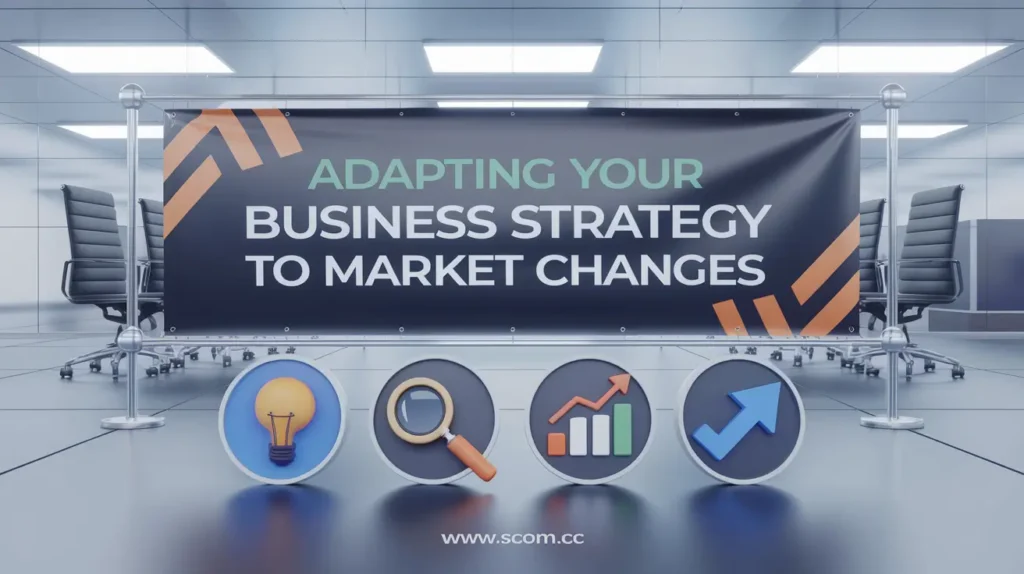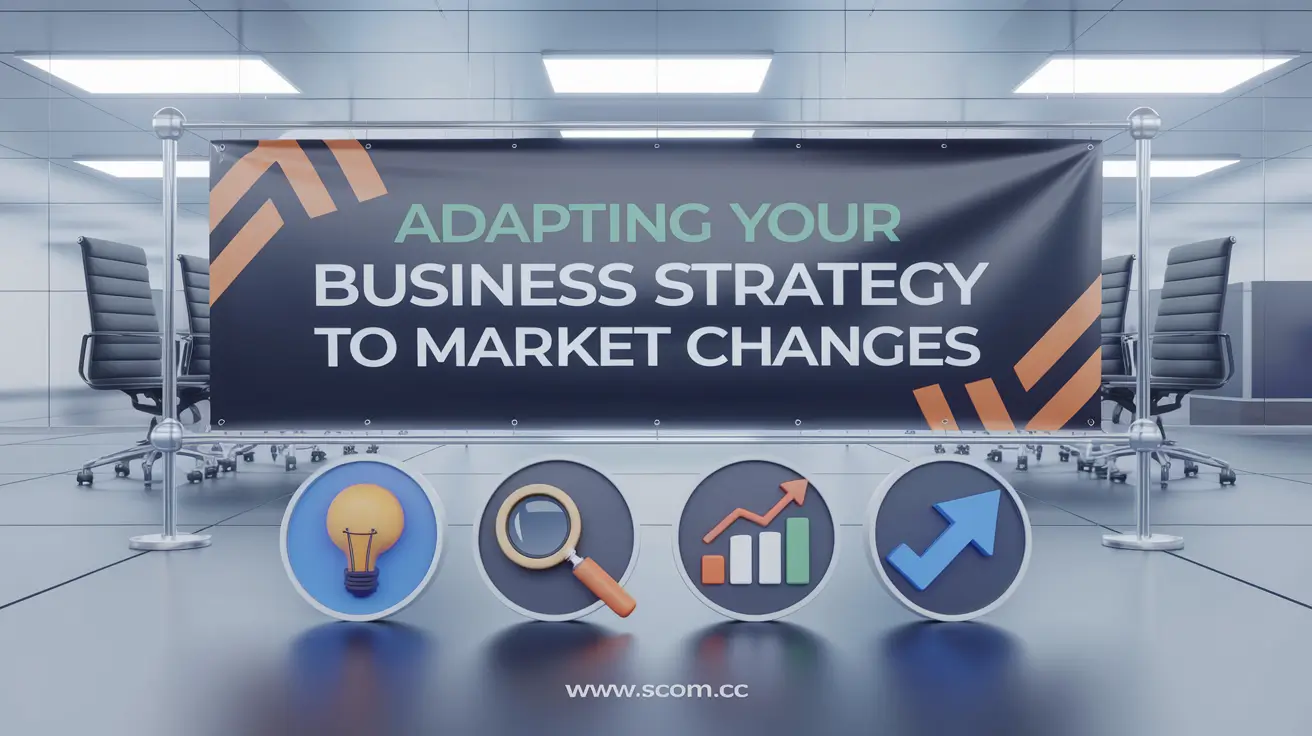Adapting Your Business Strategy to Market Changes

- Adapting Your Business Strategy to Market Changes
- 1. Stay Informed: Monitoring Market Trends
- 2. Embrace Flexibility: Creating an Agile Strategy
- 3. Leverage Technology: Driving Innovation and Efficiency
- 4. Customer-Centric Approach: Aligning with Evolving Needs
- 5. Diversification: Expanding Revenue Streams
- 6. Financial Resilience: Strengthening Your Financial Position
- 7. Continuous Learning: Fostering a Culture of Innovation
- Conclusion: Thriving in a Changing Market
Adapting Your Business Strategy to Market Changes
In today’s rapidly evolving business landscape, adapting your business strategy to market changes is essential for survival and growth. Market dynamics, driven by technological advancements, shifting consumer preferences, economic fluctuations, and competitive pressures, can significantly impact your business. Successfully navigating these changes requires agility, foresight, and a willingness to adjust your strategies in response to emerging trends and challenges. Below, we explore key approaches to effectively adapt your business strategy to market changes.
1. Stay Informed: Monitoring Market Trends
The first step in adapting your business strategy is staying informed about market trends and changes. This requires a proactive approach to gathering information about your industry, competitors, and the broader economic environment. By regularly monitoring trends, you can anticipate changes and prepare your business to respond effectively.
How to Stay Informed:
- Industry Reports: Subscribe to industry publications and reports to stay updated on the latest developments.
- Customer Feedback: Regularly collect and analyze customer feedback to identify changing preferences and needs.
- Competitive Analysis: Keep a close eye on your competitors’ strategies and market positions.
- Economic Indicators: Monitor economic indicators that could impact your market, such as interest rates, inflation, and consumer confidence.
Staying informed allows you to make data-driven decisions and position your business to capitalize on new opportunities while mitigating risks.
2. Embrace Flexibility: Creating an Agile Strategy
In a changing market, flexibility is key. An agile business strategy allows you to quickly adapt to new circumstances without being tied to rigid plans. This means being open to change, revisiting your goals regularly, and being willing to pivot when necessary.
Elements of an Agile Strategy:
- Regular Review: Continuously assess your business strategy and adjust it based on real-time data and feedback.
- Scenario Planning: Develop multiple scenarios and contingency plans to prepare for different market outcomes.
- Cross-Functional Teams: Encourage collaboration across departments to foster innovation and quick decision-making.
- Iterative Processes: Implement processes that allow for continuous improvement and rapid iteration.
By building flexibility into your strategy, your business can respond more effectively to unexpected changes and challenges.
3. Leverage Technology: Driving Innovation and Efficiency
Technology plays a crucial role in enabling businesses to adapt to market changes. By leveraging the latest technological tools and innovations, you can improve efficiency, enhance customer experiences, and stay ahead of competitors. Digital transformation should be a core component of your strategy adaptation.
Ways to Leverage Technology:
- Automation: Implement automation tools to streamline operations and reduce costs.
- Data Analytics: Use data analytics to gain insights into customer behavior, market trends, and operational performance.
- Digital Marketing: Invest in digital marketing strategies to reach and engage with customers more effectively.
- E-commerce Platforms: Expand your online presence to tap into new revenue streams and markets.
Embracing technology not only helps you adapt to changes but also positions your business for long-term success in a digital-first world.
4. Customer-Centric Approach: Aligning with Evolving Needs
As markets change, so do customer preferences and expectations. A customer-centric approach ensures that your business remains aligned with evolving customer needs. By focusing on delivering value and enhancing the customer experience, you can build strong relationships and maintain loyalty, even in a changing market.
Strategies for a Customer-Centric Approach:
- Personalization: Use customer data to tailor your products, services, and communications to individual preferences.
- Customer Feedback Loops: Create mechanisms for collecting and acting on customer feedback regularly.
- Customer Journey Mapping: Analyze the customer journey to identify pain points and opportunities for improvement.
- Responsive Customer Service: Invest in responsive and proactive customer service to address issues quickly and effectively.
A customer-centric strategy not only helps you retain existing customers but also attracts new ones by meeting their changing needs.
5. Diversification: Expanding Revenue Streams
Diversification is a key strategy for mitigating risks and ensuring business stability in a changing market. By diversifying your product offerings, services, or market segments, you can reduce your reliance on a single revenue stream and increase your resilience against market fluctuations.
Approaches to Diversification:
- Product Diversification: Introduce new products or services that cater to different customer segments or markets.
- Geographical Expansion: Explore opportunities to enter new regional or international markets.
- Strategic Partnerships: Form alliances with other businesses to access new resources, technologies, or customer bases.
- Investing in Innovation: Allocate resources to research and development (R&D) to continuously innovate and adapt to changing market demands.
Diversification not only provides additional revenue streams but also strengthens your business’s ability to weather market changes.
6. Financial Resilience: Strengthening Your Financial Position
Financial resilience is critical for adapting to market changes. A strong financial foundation allows your business to invest in new opportunities, weather downturns, and maintain operations during periods of uncertainty.
Building Financial Resilience:
- Cost Management: Regularly review and optimize your cost structure to maintain profitability.
- Cash Flow Management: Ensure you have sufficient cash flow to cover expenses and invest in growth initiatives.
- Emergency Funds: Establish a financial buffer to protect your business during economic downturns or unexpected challenges.
- Access to Capital: Maintain strong relationships with investors, banks, and financial institutions to secure funding when needed.
A financially resilient business is better equipped to adapt to changes and seize new opportunities as they arise.
7. Continuous Learning: Fostering a Culture of Innovation
In a dynamic market, continuous learning and innovation are essential for staying competitive. Encourage a culture of learning within your organization, where employees are empowered to develop new skills, experiment with new ideas, and drive innovation.
Ways to Foster Continuous Learning:
- Training and Development: Invest in training programs that help employees stay current with industry trends and technologies.
- Innovation Labs: Create dedicated spaces or teams for experimenting with new ideas and approaches.
- Encourage Experimentation: Allow employees to test new strategies and learn from failures in a safe environment.
- Knowledge Sharing: Foster a culture of knowledge sharing, where employees collaborate and share insights across departments.
By embracing continuous learning and innovation, your business can remain agile and responsive to market changes.
Conclusion: Thriving in a Changing Market
Adapting your business strategy to market changes is not just a necessity; it’s a competitive advantage. By staying informed, embracing flexibility, leveraging technology, and maintaining a customer-centric approach, you can navigate market shifts with confidence. Diversification, financial resilience, and continuous learning further strengthen your ability to thrive in a dynamic environment. By implementing these strategies, your business will be well-positioned to not only survive but also grow and succeed in the face of change.

If you enjoyed this article and found it valuable, we encourage you to explore our news and valuable information section, where you'll find more relevant and up-to-date content that may pique your interest. Additionally, if you are seeking advice or need guidance on a specific topic, we suggest visiting our services section. There, you will find a variety of options designed to assist and support you in addressing your needs. Feel free to check out both sections to get the information and assistance that best suits your requirements.

Leave a Reply